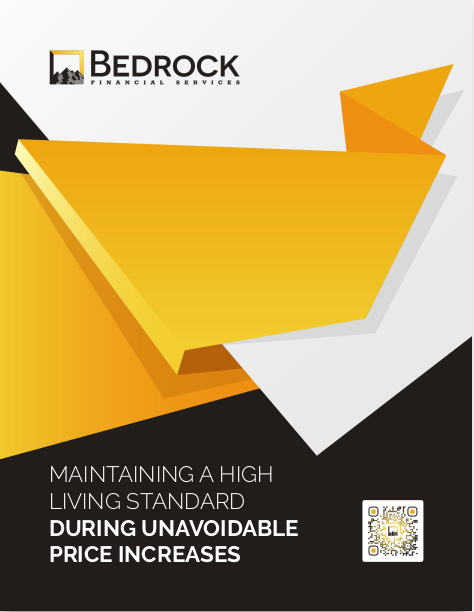Key Takeaways
-
Fall creates a unique psychological and logistical readiness in clients that naturally supports deeper conversations about coverage updates.
-
You can use this season to frame options, simplify decisions, and position changes as part of an intentional year-end financial strategy.
Why Fall Is a Natural Window for Financial Re-Evaluation
As a financial professional, you’ve likely noticed a seasonal rhythm to client responsiveness. Fall, in particular, offers a valuable opportunity to engage in conversations around coverage changes. Clients tend to be more reflective in the fourth quarter—thinking about their year, their health, their money, and their upcoming needs. You don’t need to push hard. Fall invites them to reconsider naturally.
Here’s why this time of year often opens the door wider than any other season:
-
The calendar prompts action. As year-end approaches, clients feel a natural urgency to tie up loose ends and prepare for a new fiscal and personal cycle.
-
Open enrollment periods abound. For many employer benefits and government programs, fall marks the annual window to make adjustments—creating a direct prompt to think about coverage.
-
It feels like a reset. September through December has a built-in sense of preparation—before the holidays, before tax season, before another year begins.
If you learn to align your outreach with this mindset, you’ll find clients more open to conversations that felt heavy or avoided earlier in the year.
Leverage Fall’s Built-In Decision Cycles
Fall isn’t just a feeling. It’s also full of structural and policy-based opportunities you can connect to.
Health Insurance Review Cycles
Many clients face enrollment deadlines from October through December. Whether they’re on employer plans, ACA plans, or retiree options like Medicare, they know changes are coming. You can:
-
Offer reviews aligned with those windows.
-
Bring attention to cost changes, benefit updates, and plan shifts that require reevaluation.
-
Help clients think beyond premiums—into total value and risk management.
Tax Planning Deadlines
Fall is the last chance for most clients to:
-
Adjust Health Savings Account contributions.
-
Review Flexible Spending Accounts.
-
Consider Roth conversions or charitable giving strategies.
By framing coverage changes as part of overall tax strategy, you anchor your guidance in real, time-sensitive financial planning.
End-of-Year Budget Reviews
Clients often pause to look back at what they’ve spent, saved, or missed. That reflective mood makes them more willing to accept the idea that what worked before may not fit the year ahead.
-
Talk about long-term costs, not just current prices.
-
Walk through how small coverage changes now may reduce large, unexpected costs later.
Positioning Coverage Changes as Strategic, Not Reactive
Clients are often hesitant to make coverage changes because they associate them with fear, regret, or some problem they didn’t anticipate. In the fall, you can shift the tone.
Show the Client They’re in Control
The fall season has a proactive tone—kids return to school, businesses review Q4 goals, and families begin planning for the holidays. That sense of structure and intention can mirror your financial conversations.
Instead of saying: “Let’s fix this problem with your coverage.”
You might say: “Let’s align your coverage with where you’re headed in the next 12 months.”
This keeps the conversation positive and forward-focused.
Use Planning Language
Rather than framing changes as fixes or corrections, use planning-oriented language. For example:
-
“We’re adjusting this policy as part of your year-end strategy.”
-
“This is a proactive choice so next year’s coverage serves you better.”
Clients want to feel they’re upgrading, not troubleshooting. Your tone matters.
Address Common Objections with Seasonal Framing
Fall conversations still come with friction. But when objections arise, you can tie your responses to seasonal themes that feel familiar.
Objection: “Let’s wait until next year.”
Your Response: “The window to make this change closes in just a few weeks. Acting now gives you full options—and you’ll go into next year with confidence, not questions.”
Objection: “I’m too busy.”
Your Response: “Totally understandable. That’s exactly why I streamline this process for you now—before the holiday season takes over and your window closes.”
Objection: “I’m not sure it’s worth changing anything.”
Your Response: “That’s fair. But most changes we’ve reviewed with clients this season don’t mean a total overhaul. It’s about fine-tuning what already works, so you get more value in 2025.”
By connecting your answer to the timing, you reduce resistance without pushing harder.
Use Tools That Simplify the Decision Process
Fall energy can be productive—but also scattered. Help your clients make clear decisions by using simple frameworks and tools:
-
Side-by-side comparisons of current versus potential coverage.
-
Checklists that show what’s changed in 2025.
-
One-pagers that summarize choices, timelines, and next steps.
Keep the conversation visual and organized, especially when they’re managing other deadlines.
Make It About More Than Insurance
Coverage is just one piece of a bigger conversation. When you link it to a client’s broader values and goals, you gain buy-in faster.
In fall, many clients are already thinking about:
-
Family priorities during the holidays.
-
Legacy planning heading into a new year.
-
Health realities as flu season and winter approach.
You can use those emotional and logistical anchors to show how coverage updates connect to things they already care about. For example:
-
“If you’re spending more time with your family over the holidays, let’s make sure your coverage reflects the people who rely on you.”
-
“If your health expenses have changed this year, we can rework your protection going into next year.”
It’s not a sales tactic. It’s a recognition of what’s on their mind anyway.
Time-Sensitive Language That Actually Works
Avoid pressure tactics—but don’t avoid urgency. Fall gives you natural, fact-based deadlines. Use language like:
-
“We only have until mid-December to get this locked in for 2025.”
-
“The 2025 updates just became available, and now’s the time to decide what fits best.”
-
“If we wait until January, you’ll be stuck with your current setup until next fall.”
This helps clients act now without feeling like they’re being sold to. They’re being advised.
Don’t Wait for Clients to Ask—Be the Initiator
Clients are busy. Even if coverage reviews are on their mental list, they rarely make it to the top without a prompt.
You don’t need to wait for them to reach out:
-
Schedule fall review calls or emails by early October.
-
Follow up in early November for clients who haven’t responded.
-
Add a final touchpoint in the first week of December for last-minute opportunities.
Space out your communications so you’re helpful, not overwhelming. But don’t skip them altogether—fall moves fast.
Fall Is Your Window to Reconnect and Reset
You don’t need to change your entire strategy. You just need to ride the current of a season that’s already primed for action.
Use fall as a framework for:
-
Reestablishing contact with clients who’ve been quiet.
-
Revisiting assumptions that no longer fit their lifestyle or financial picture.
-
Helping them enter 2025 with better coverage, fewer surprises, and more clarity.
This isn’t just about a quarterly target. It’s about real, seasonal alignment with your clients’ lives.
Make the Most of the Fall Readiness Window
Fall creates a rare convergence of reflection, urgency, and planning that works in your favor. Instead of fighting for client attention, you’re stepping into a moment where they’re naturally more open to reevaluation.
And you don’t have to do it alone. At Bedrock Financial Services, we help professionals like you make the most of seasonal momentum. Our tools, automation, and support are designed to keep you focused on the conversations that matter—not stuck chasing paperwork or deadlines.
Sign up today and let us help you turn fall conversations into stronger client relationships and higher-value portfolios.







